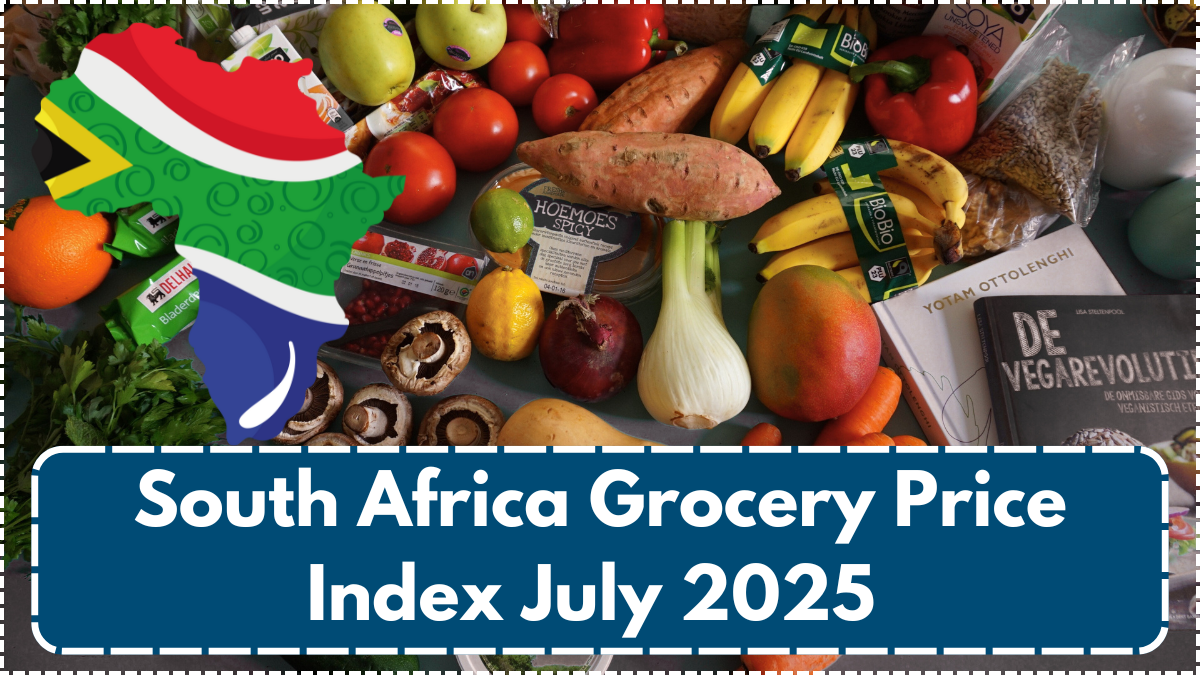Rising costs are reshaping how South Africans shop for food in July 2025. The latest Grocery Price Watch reveals stark increases in essential items, sparking concern across households and policy circles alike. Based on updated figures from the South Africa food price index, staples such as bread, maize meal, and cooking oil are posting double-digit inflation, putting significant pressure on consumer wallets.

What the Numbers Show: Key Insights from July 2025
The recent update to the South Africa food price index highlights alarming month-over-month changes. Price increases aren’t just seasonal fluctuations; they represent ongoing pressures driven by fuel costs, supply chain disruption, and a weak rand. Below is a snapshot of the most affected items:
| Grocery Item | Price Increase (YoY) | July 2025 Avg Price (ZAR) |
|---|---|---|
| White Bread (700g) | +18% | R19.75 |
| Maize Meal (2.5kg) | +22% | R34.10 |
| Sunflower Oil (1L) | +25% | R47.80 |
| Eggs (18 pack) | +16% | R41.00 |
| Frozen Chicken (1kg) | +12% | R58.50 |
These increases are reshaping household budgets and making nutrition more expensive, especially for lower-income communities.
What’s Driving the Price Spikes?
The July 2025 Grocery Price Watch attributes rising prices to several overlapping challenges. Fuel price hikes have driven up transportation costs. Simultaneously, global commodity volatility—exacerbated by regional droughts and international trade shifts—has impacted imports of wheat and oil. The local agricultural sector has also been hit by load-shedding, which has disrupted production and cold-chain storage.
As a result, the price index is not just reacting to market trends but deeper systemic issues. The South Africa food price index now reflects both global pressures and domestic inefficiencies.
How Consumers Are Adapting
Faced with rising costs, many consumers are shifting buying habits. Bulk purchasing groups on social media are gaining traction. Informal markets, which offer more competitive prices than retail chains, are seeing a resurgence. More households are also exploring urban farming to grow basics like spinach, tomatoes, and herbs at home.
Food basket substitutions are also common. Instead of red meat, consumers are opting for more affordable protein sources like eggs, lentils, or canned fish. Meanwhile, some are cutting back on discretionary items like snacks, cereals, and processed foods.
Looking Ahead: What to Watch in Q3 2025
While government interventions—such as proposed subsidies for basic foods—are in early discussions, no immediate relief is expected. Analysts suggest watching global grain and oil markets closely, as South Africa imports much of its wheat and cooking oil. A potential rand recovery could ease import costs, but ongoing infrastructure problems may still weigh heavily on domestic distribution.
Consumers and retailers alike will need to stay alert. Monthly tracking of the Grocery Price Watch and South Africa food price index is becoming a critical habit for families trying to navigate the shifting economics of their weekly shop.
FAQs
What is the Grocery Price Watch?
The Grocery Price Watch is a monthly tracker that monitors changes in prices for key food items in South African stores, helping consumers stay informed.
Why are food prices increasing in July 2025?
The main factors include fuel costs, agricultural disruptions due to load-shedding, and a weak currency affecting imports.
Which products have seen the highest price increase?
Sunflower oil, maize meal, and bread have posted the highest increases, according to the latest South Africa food price index.
Is the government doing anything to control food inflation?
There are talks of subsidies and policy interventions, but implementation is still pending.
How can I manage my grocery budget better?
Consider bulk buying, shopping at informal markets, and growing some food at home to reduce expenses.
For More Information Click Here



